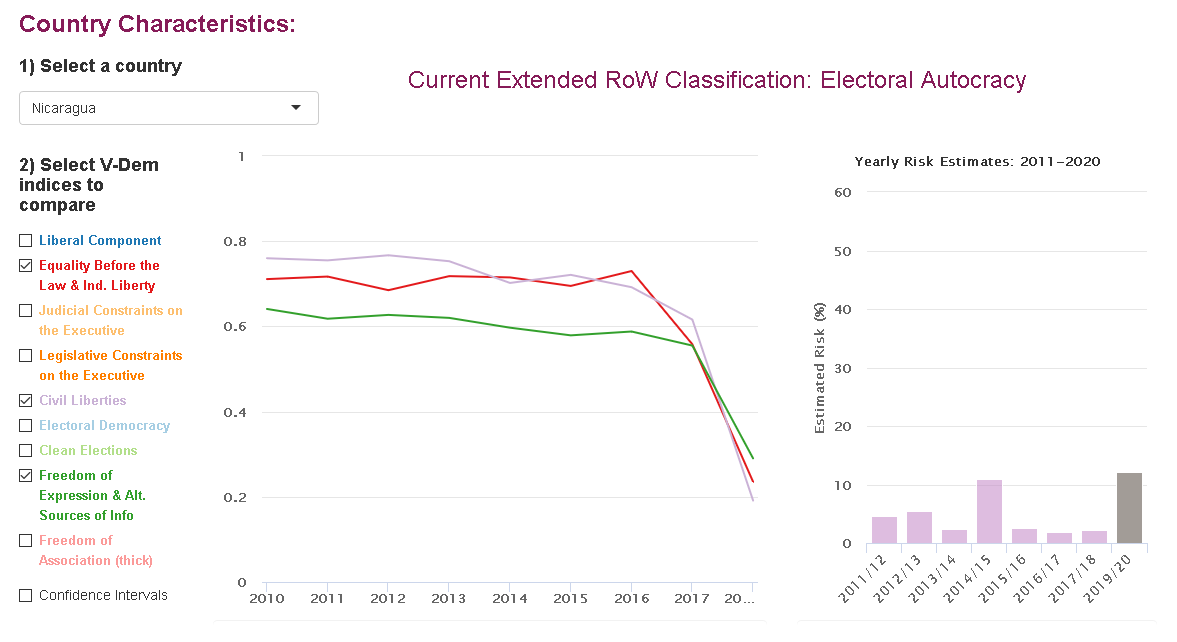The Predicting Adverse Regime Transitions (PART)
By: Ana Laura Ferrari
Sep 29, 2020
Countries can be more democratic or more autocratic. Over time, they can move up and down this scale, following changes in the fairness of elections, the protection of civil liberties, and the laws that keep governments accountable. When a country comes closer to the ideal of democracy, we speak of democratization. When the reverse occurs, we call the process autocratization.
Can we predict when autocratization occurs? The Predicting Adverse Regime Transitions (PART) project tries to answer this question. It uses three different machine learning models and employs data from the Varieties of Democracy (V-Dem) project and four additional databases (UN GDP and population, ethnic power relations, coup event, and UCDP armed conflict) to produce yearly estimates of the risk of adverse regime transitions for each country. More information about the Methodology is available here.
To delve into the PART project, we will take a closer look at Nicaragua. The Central-American country is neither a liberal democracy nor a closed autocracy. According to the Regimes of the World (RoW) classification, Nicaragua is currently an electoral autocracy, meaning it holds de-jure, but not de-facto multiparty, free, and fair elections for the chief executive and the legislature. The PART model states that the country has a 10% chance of transiting to a closed autocracy in 2019 and 2020. In a closed autocracy, political competition is severely restricted, and multiparty elections do not exist.
A 10% chance of adverse regime change is significant since 75% of the PART’s risk scores are between 3.8% and 5.6%. This is the highest risk the model has estimated for the country since 2011, as the bar chart on the right side of the image shows. Purple bars indicate that no transition occurred during the two evaluated years. Gray bars indicate the estimated risk for the current 2-year forecast window.
What can explain this higher risk? We can derive some answers from the graph on the left side. From 9 V-Dem indices, I chose the ones that presented the sharpest drop: equality before the law & individual liberties, civil liberties, and freedom of expression & alternative sources of information. The graph shows the evolution of these indices from 2010 to 2019.
The current Nicaraguan president Daniel Ortega took office in January 2007. He is known for investing in social programs that helped reduce poverty and for amending the Constitution to remove term limits and increasing his power. Elections in Nicaragua are not fair, and partisan control over the electoral process exists.
However, since 2016, the situation has worsened. The Supreme Electoral Council managed to bar opposition parties from participating in that year’s general election. In 2018, protesters dissatisfied with the government were killed and treated with brutal violence by the police. Journalists are facing increasing harassment, persecution, and attacks.
Some of these events can help to explain the country’s further democratic decline. Undoubtedly, Nicaragua is experiencing drawbacks in civil and political liberties. As the PART project foresees, this worrying trend increases the chance of adverse regime change.


